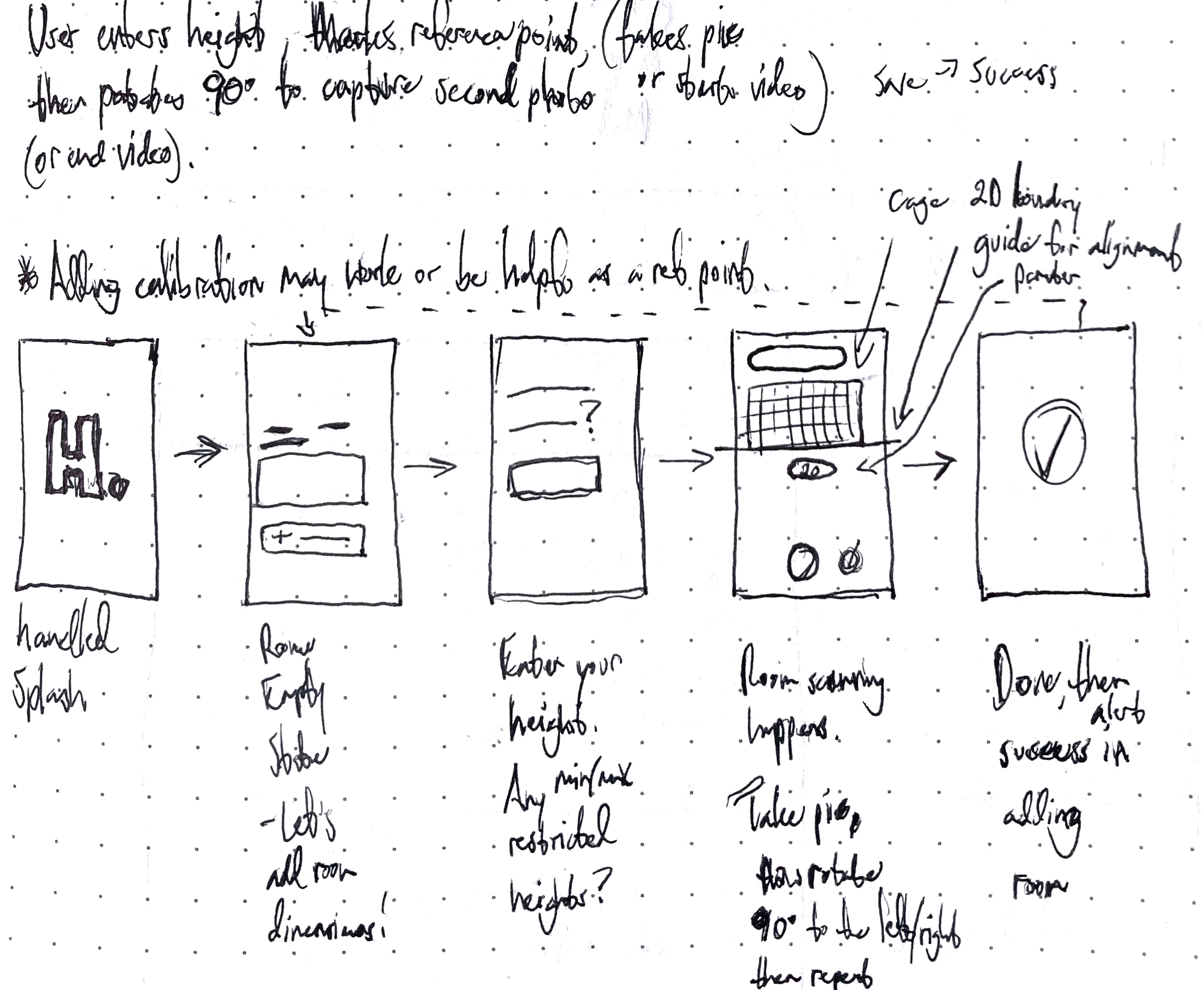Earlier this month at work, I had a chance to build a concept prototype for Handled, a modern moving experience startup now fully acquired by UniGroup. At the time, the product team had an initial API proof-of-concept in place to capture and calculate room dimensions but didn't have an easy way to guide users to measure rooms properly. Needing help, they reached out to our design team for guidance in cultivating a sample experience.
Once the opportunity fell in my lap, I was ecstatic as this project opened the door to learn more about augmented reality and explore its possibilities outside of my main work stack. After jotting down initial questions and thoughts for the project, I set up a design+dev kickoff meeting to learn more about who I'd work with as well as gain an understanding of the project's background, scope, and timeline.
Next, I devoured many articles about current AR use with mobile devices and analyzed top measurement app companies to determine best practices for creating an optimal experience.
Compiling notes from my brief comp analysis and kickoff meeting, I sketched a rough idea of the room-scanning flow and added an updated version to Whimsical to share with the team for feedback.
Although the overall response was positive, I wasn't satisfied with the wireframe flow as the sole deliverable. Since this project involved the use of AR, I felt like there may be parts of the flow one may not grasp unless as-close-to-real-as-possible interactive examples are present. Also, since my personal goal of learning ProtoPie was in motion, I thought this would be a great opportunity to develop some interaction design muscles in tandem.
Working through ProtoPie's standard interactions to reflect the wireframe flow's basic parts wasn't super difficult, once I got comfortable with the app's interface. The boss-level challenge came when I tried to add the flow's room scanning portion. I wanted the prototype to simulate measurement of a room as one pans their phone from left to right. The only way to make this true dynamic interaction was to learn more about using ProtoPie's variables and formulas. After experiencing many trial-and-error episodes and Medium browsing, I managed to set up triggers to make my measurement component move based on the smartphone's sensors.
After the room measurement interaction win, it was time to share the rough concept with my design teammates for initial feedback on flow interactions and meeting user guidance goals.
The team had positive feedback for the look and general flow of the app, but pointed out possible missed opportunities for guiding users. From the team, I learned my instructions and/or videos may provide more value and easier reference if they were able to exist and/or appear on the main scanning screen.
When the team design critique ended, I had a lot couple of improvement ideas to explore. Yet, the immediate next step was to gather feedback from the product team to see if this concept was heading in the right direction. Although there was appreciation for the prototyping efforts, the team decided to scrap the next steps for this project and shift to a more pressing need. Although I wanted to continue iterating on the screens, I respected the changes.
Sometimes plans don't pan out in the way we expect them, but there's always something to learn from the journey. In this case, I'm thankful for having the chance to experiment with new prototyping software and work on a fun concept outside of my usual scope of work. Here's to more lessons!



